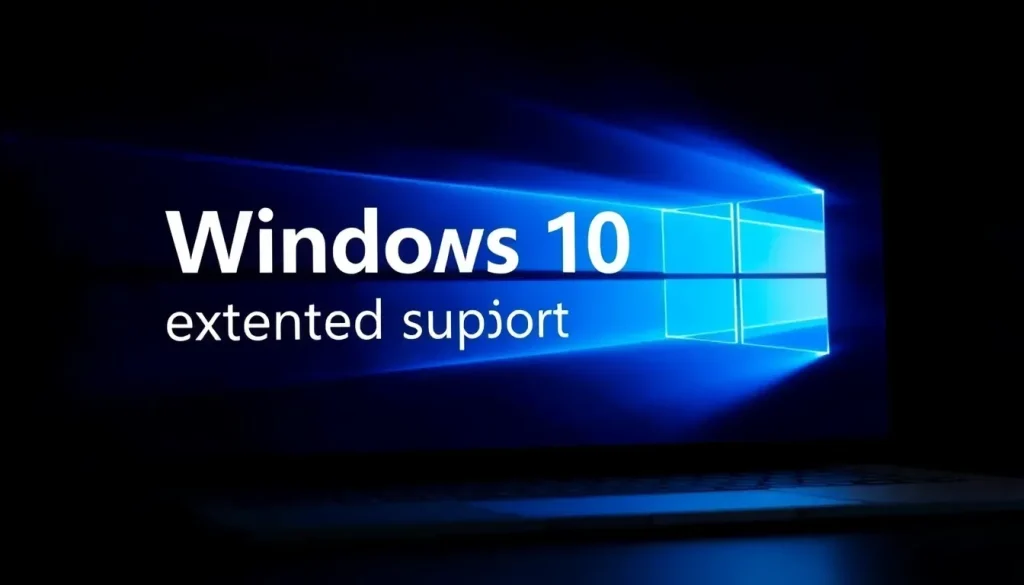Windows 10 extended support users get end-of-life notifications due to bug

Windows 10, a cornerstone of Microsoft's operating systems, is entering a new phase of its lifecycle, causing both confusion and concern for its users. Although the official support for Windows 10 ended on October 14, 2025, various versions will continue to receive support from Microsoft. However, recent bugs have led to unexpected notifications that have disrupted the user experience. Understanding these changes is crucial for users looking to navigate this transition smoothly.
Understanding Windows 10 Extended Support
The Extended Security Updates (ESU) program is a lifeline for Windows 10 users who wish to maintain their systems beyond the official end-of-support date. This program is particularly significant for businesses and organizations that rely on Windows 10 for their operations. Users in the European Economic Area (EEA) are eligible for these updates at no cost, while those in other regions must pay a one-time fee or utilize Microsoft’s cloud services to access the same benefits.
Notably, the ESU program provides essential security updates that help protect systems from vulnerabilities and potential threats. Here are some key points about the program:
- Eligibility is based on the version of Windows 10 being used.
- Free access is granted to users within the EEA.
- Others may incur a one-time fee for continued support.
- Users can also opt for cloud services for access.
Current Issues with Windows 10 Notifications
Despite signing up for the ESU or using a version of Windows 10 with built-in support, many users have been receiving unexpected end-of-life notifications. This problem primarily affects those running the Education, Enterprise, and Pro versions of Windows 10. Such notifications can create anxiety, prompting users to question the integrity of their systems.
Microsoft has acknowledged this issue, identifying its root in the KB5066791 update released on the same day as the end of official support. The company has since implemented a cloud configuration update aimed at resolving these erroneous notifications. Users who encounter these messages should take comfort in knowing that they are likely facing a technical glitch rather than an actual end-of-support scenario.
Assuring Users: What to Do If You Receive Notifications
If you are a Windows 10 user and have encountered unexpected end-of-life notifications, there are several steps you can take:
- Stay calm; these notifications are likely due to a bug.
- Verify your ESU enrollment status if you are a personal user.
- For workplace users, contact your IT Administrator for guidance.
- Ensure that your system is updated to avoid further issues.
Support Timeline for Windows 10 Versions
Understanding the support timelines for different Windows 10 versions is crucial for users who want to make informed decisions about their systems. The following outlines the support timelines for specific Windows 10 versions:
| Version | End of Support Date |
|---|---|
| Windows 10 22H2 Pro | January 12, 2027 |
| Windows 10 22H2 Education | January 12, 2027 |
| Windows 10 22H2 Enterprise | January 12, 2027 |
| Windows 10 Enterprise LTSC 2021 | January 13, 2032 |
| Windows 10 IoT Enterprise LTSC 2021 | January 13, 2032 |
This timeline is vital for planning upgrades and ensuring that your organization remains secure and compliant. Staying informed about these dates can help avoid any potential disruptions in service.
Looking Ahead: Transitioning to Windows 11
As Windows 10 gradually sunsets, many users are contemplating the transition to Windows 11. Although Windows 10 will continue to receive support for certain versions until 2027 and beyond, the advantages of upgrading to Windows 11 may outweigh the benefits of remaining on an older operating system. Windows 11 offers enhanced features, improved security, and a more modern user interface.
For users considering this transition, here are some aspects to keep in mind:
- Windows 11 requires specific hardware standards, which may necessitate an upgrade.
- The new OS introduces features like Snap Layouts, Widgets, and improved gaming capabilities.
- Security enhancements in Windows 11 include hardware-based isolation and secure boot features.
Final Thoughts on Windows 10 Support
While the end of official support for Windows 10 is here, the Extended Security Updates program provides a pathway for users to maintain their systems securely. The recent notification bugs may have caused confusion, but Microsoft is actively addressing these issues. As users navigate this transition, understanding the timelines, support options, and the potential for upgrading to Windows 11 will be key to maintaining a secure and efficient computing environment.
For those seeking visual insights, consider watching this video on the topic:




Leave a Reply